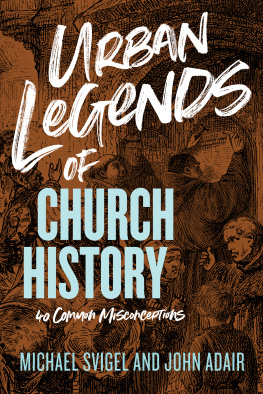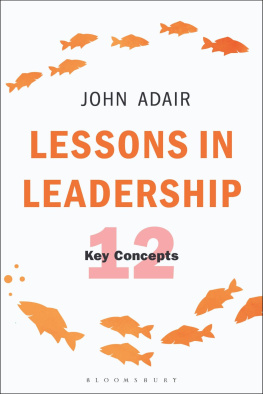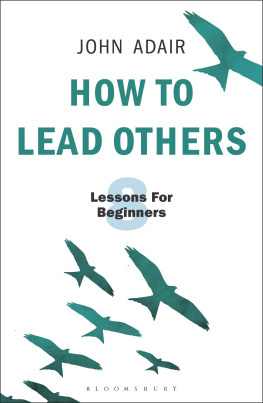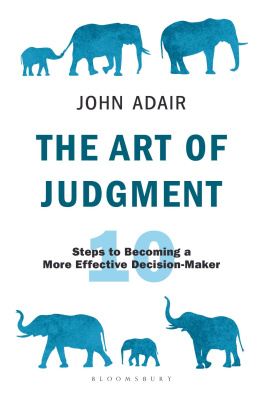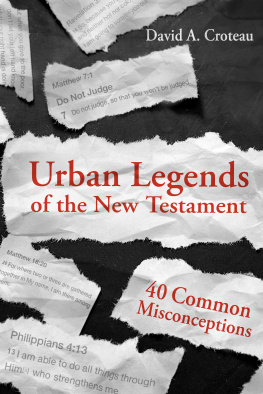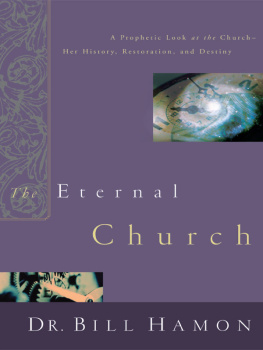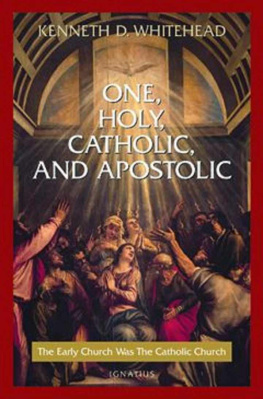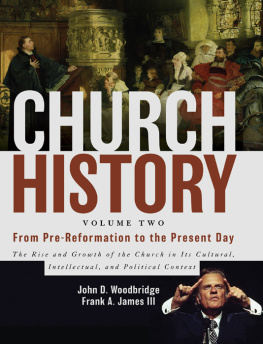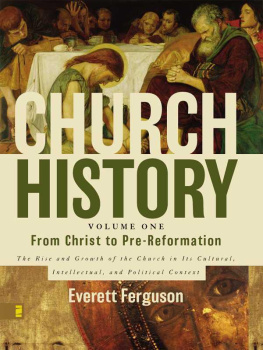In this book John Adair and Michael J. Svigel have gone on a church history myth-busting rampage like a bull in a China shop. Whether it is secular conspiracy theories or pious prejudices, they expose the fake news about church history. The whole book is one big, Well, actually, no, that aint true, what really happened was... This book is a great cure for a whole lot of stupid. Mandatory reading for anyone beginning church history!
Michael F. Bird, academic dean, lecturer in theology, Ridley College, Melbourne, Australia
Busting myths and misinformation with wit, wisdom, and goodwill, Adair and Svigel have done a great service to the church with their Urban Legends of Church History . From their extensive knowledge and with helpful illustrations, the authors deliver a clear explanation of key moments and topics throughout church history. The authors goals are not merely to expose legends, but to apply historys lessons today for the sake of Christian unity and the health of the church. Every pastor and teacher should have this book on their shelf.
Lynn H. Cohick, provost and dean, professor of New Testament, Denver Seminary
As an orthodox, Protestant, evangelical Christian, I believe there has never been a more important time to know church history than right now. In Urban Legends of Church History , John Adair and Michael Svigel offer gentle and straightforward responses to some of the most important misconceptions, half-truths, and fallacies throughout the history of the church. For too long, these urban legends have shaped our Christian culture.
Kyle D. DiRoberts, associate professor of biblical and theological studies, Arizona Christian University
This volume bears witness to the fact that, if things are repeated long enough, if they are found in copious footnotes in worthy publications, and if they were written by trustworthy spokespersons, they will make it into the world of repeatable truths. Such is the point of this well-written, well-documented book. Myths make for more exciting stories, we suppose, but they do little service in accurately representing reality. I highly recommend this work, written by two competent scholars, who believed the unvarnished story of our Lords church is far more beautiful than fabrications. The examples employed to demonstrate what we have all experienced when we found what we thought was, yet was not, are extremely instructive and revealing. It deserves a serious read by anyone concerned with re-presenting the past so as to understand our present and live in hope for our tomorrows.
John D. Hannah, research professor of theological studies and distinguished professor of historical theology, Dallas Theological Seminary
Adair and Svigel have ventured forth upon a questto slay the dragon of popular misconception. This is no fools errand. Armed with sharp and incisive acumen, they jab at fallacies and slice through fabrications. They summon readers to face evidences and to feel the force of arguments. Those who do so bravely are sure to learn from the adventure.
Paul A. Hartog, professor of theology, Faith Baptist Theological Seminary
Urban legends can frequently entertain or amuse, but when they involve the churchs history and doctrine, they can have quite serious consequences that negatively impact the church. Adair and Svigels handy and accessible volume identifies and confronts some enduring misapprehensions in the church. With a winsome and engaging tone, they bring theological expertise and historical knowledge to these issues, presenting and examining claims even-handedly, undergirding their explanations with abundant primary source evidence. This book will benefit any Christians interested in a faith based on facts rather than myths. For directly addressing and expertly answering these urban legends, Adair and Svigel are to be profusely thanked.
Stefana Laing, assistant professor of divinity, Beeson Divinity School
Urban legends are not benign. They distort our understanding of the historic Christian faith. The authors invite readers to evaluate each legend in light of the historical evidence. The relevance is made clear through helpful applications at the end of each chapter. One may not agree with every interpretation, but the treasure of church history is furthered in this work.
Bruce Rosdahl, professor of Bible and theology, department chair for Bible and theology, Southwestern Assemblies of God University
Adair and Svigel have done the church a great service in this book. Despite the efforts of church historians to set the record straight, many pastors, teachers, and bloggers are perpetuating distortions of some pretty important aspects of the history of our faith. Such leaders need to consult the handy treatments in these pages of the things theyre getting wrong. The witness of their people is at stake.
Douglas A. Sweeney, dean and professor of divinity, Beeson Divinity School
As long as there are popular authors like Dan Brown and Bart Ehrman, there will be a need for a book like this. Adair and Svigel have searched out dozens of legends and myths in church history and offer corrections for many strange ideas about events in the last two thousand years. This book is valuable because it addresses issues that we have to deal with almost every day. Reading it is like having a church history professor constantly at your elbow.
William Varner, professor of Bible and Greek, The Masters University
Urban Legends of Church History: 40 Common Misconceptions
Copyright 2020 by John Adair and Michael J. Svigel
Published by B&H Academic
Nashville, Tennessee
All rights reserved.
ISBN: 978-1-4336-4984-4
DEWEY: 270
SUBHD: CHRISTIANITY / CHURCH HISTORY / CHRISTIAN LEGENDS
Unless otherwise indicated, Scripture quotations are taken from the Christian Standard Bible, Copyright 2017 by Holman Bible Publishers. Used by permission. Christian Standard Bible and CSB are federally registered trademarks of Holman Bible Publishers.
Scripture quotations marked ESV are taken from The Holy Bible, English Standard Version. ESV Text Edition: 2016. Copyright 2001 by Crossway Bibles, a publishing ministry of Good News Publishers.
The web addresses referenced in this book were live and correct at the time of the books publication but may be subject to change.
Cover design by Darren Welch and Emily Keafer Lambright. 19th century illustrations sourced from Alamy and iStock.
Printed in the United States of America
1 2 3 4 5 6 7 8 9 10 VP 25 24 23 22 21 20
I NTRODUCTION

Whats an Urban Legend?
We hear pastors preaching them from their pulpits. Teachers spout them in their classrooms. The internet promotes them as unquestioned truth. Books, films, and TV shows retell them with intriguing plots. And well-meaning but ill-informed people believe them. In fact, almost all of us stand guilty of receiving or repeating half-truths, exaggerations, misconceptions, or outright fallacies about the history of Christianity.
In the following pages, we capture and cage some of the most repeated fabrications, exaggerations, half-truths, and inaccuracies wandering wild in popular and Christian culture. Did Emperor Constantine really ruin Christianity? Did a council of bishops vote on which books belong in the Bible? Did the one true church go underground during the Dark Ages? Was America founded as a Christian nation? From the fable of a paganized church to the myth that the early church worshipped on the Sabbath, these historical errors have impacted the health of the church at large and the faith of individual believers.

